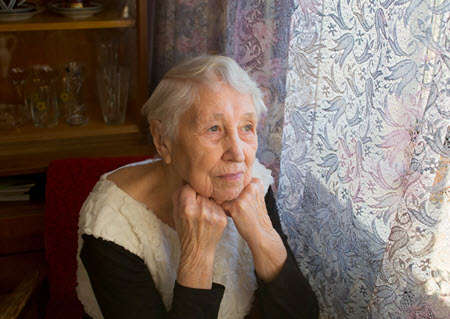 “Have I Told Them Everything?”
“Have I Told Them Everything?”
She’s the 96-year-old spitfire matriarch from a long line of strong and brave women. Mabel* now has Stage 4 ovarian cancer and has decided to go on hospice to get the best quality of life for whatever time she has left.
Mabel awakes in the middle of the night, not from the pain of her disease but from the worry that she hasn’t made her mark and hasn’t guided and taught her family everything she wants to share.
Time is short, and she wants to make sure that she says everything that needs saying to the people she loves – but doesn’t know how or where to start.
Mabel’s Legacy
Mabel’s daughter Dawn* found me on the Internet and voiced concern about Mabel’s being “down.” She wanted to help Mabel but didn’t know what to do. I met with Mabel and her family and explained the Digital Therapy Protocol, which allows a person near the end of life to share their thoughts and experiences.
In creating this legacy document together, I made sure that Mabel could tell every important, challenging, and silly story that made up the collage of her life. Reviewing her life in this way gave Mabel a sense of peace with her life and accomplishments – and joy in sharing meaningful moments of her story with her family.
Mabel’s spark was BACK. She decided to throw herself a bon voyage party to share her legacy with everyone she loved before she died. It was an epic party, and Mabel soon passed, surrounded by her family and their love.
Dawn and her brother report that the legacy document their mother made not only helped them to know her a little better in life but left them gems of advice and nuggets of wisdom to live by.
Dawn returned to the document again and again whenever she needed advice from her mom. It has provided her with incredible comfort after Mabel’s passing.
 The Process
The Process
What will you leave behind to guide your family after you’re gone?
We met in Mabel’s assisted living facility, where I explained the legacy project, inspired by Dr. Harvey Max Chochinov’s Dignity Therapy Protocols for dying patients. It is a process of asking open-ended questions about her life, thoughts, feelings, and stories. We record the words exactly and transcribe them to text. In our next session, I read Mabel’s story and asked about any additions and changes.
Once Mabel was satisfied, I cleaned up the chronology to make the words flow, and in our third session, I read Mabel’s story to her, her children, and their families. They loved it so much that they wanted their copies. Mabel demanded that the story be read aloud at her Bon Voyage Party.
The Benefits
Upon completing legacy work, clients often tell me that it improves their mood as they realize that they did more and touched many more people than they gave themselves credit for doing. Mabel used her legacy work to leave her grandchildren some (hilarious) advice for marital happiness.
My role in the process is to guide you through retelling your narrative and assist you in considering the totality of your life experiences. Those experiences can include the things you are the proudest of, the biggest lessons you have learned, and anything you want to say to the people you love.
 Tell Me A Story
Tell Me A Story
There are no restrictions on who can do this work.
My clients are usually people with a severe life-limiting illness, a poor prognosis, or newly diagnosed neurogenerative disorders. I am also contacted by the children of people experiencing these things. They want to know their loved one’s story while they are still able to tell it.
What story do you want to tell or hear?
It is never too early to start telling the story.
Call or click here today to schedule your free initial 15-minute consultation.
*Names changed to protect client confidentiality.

